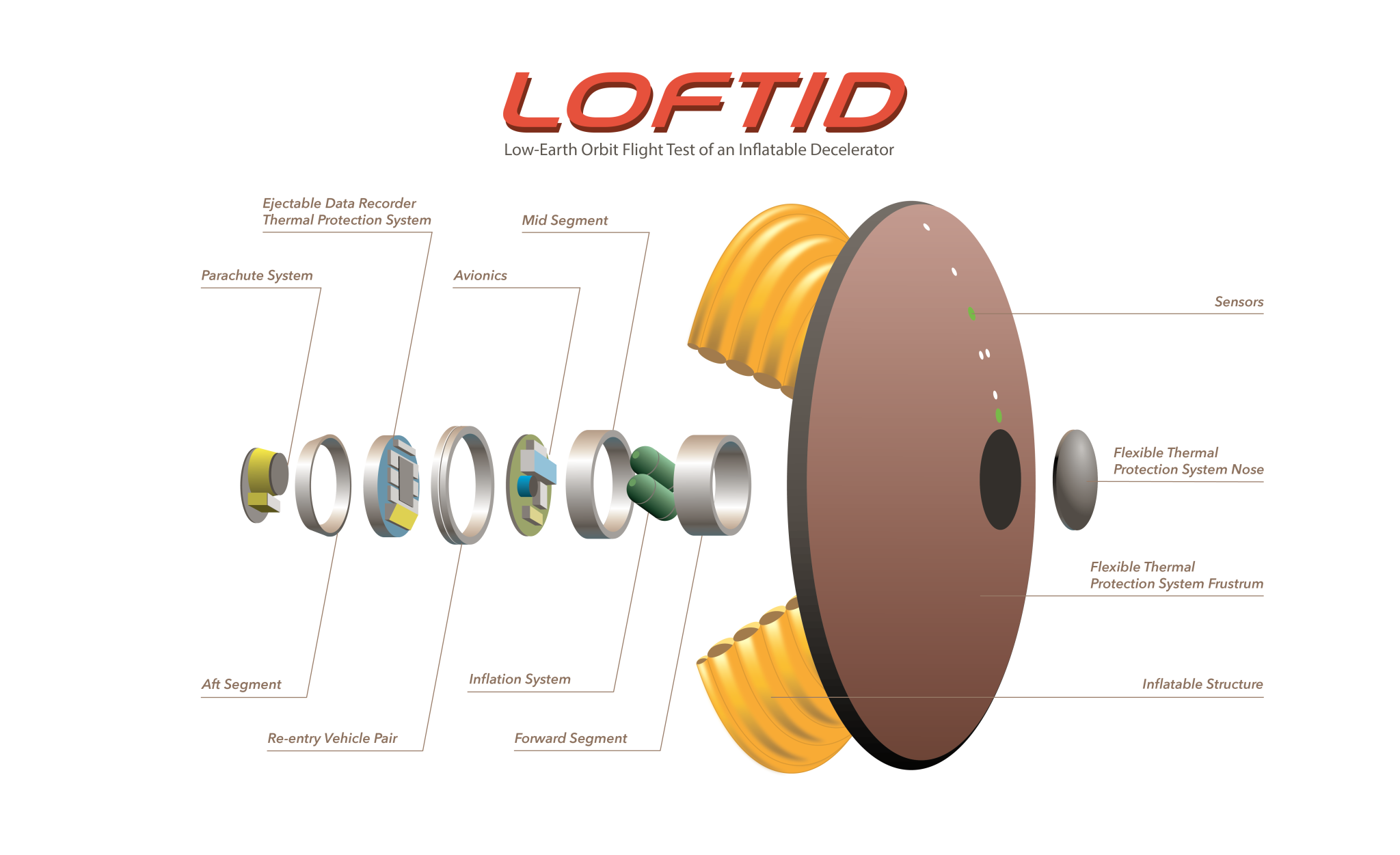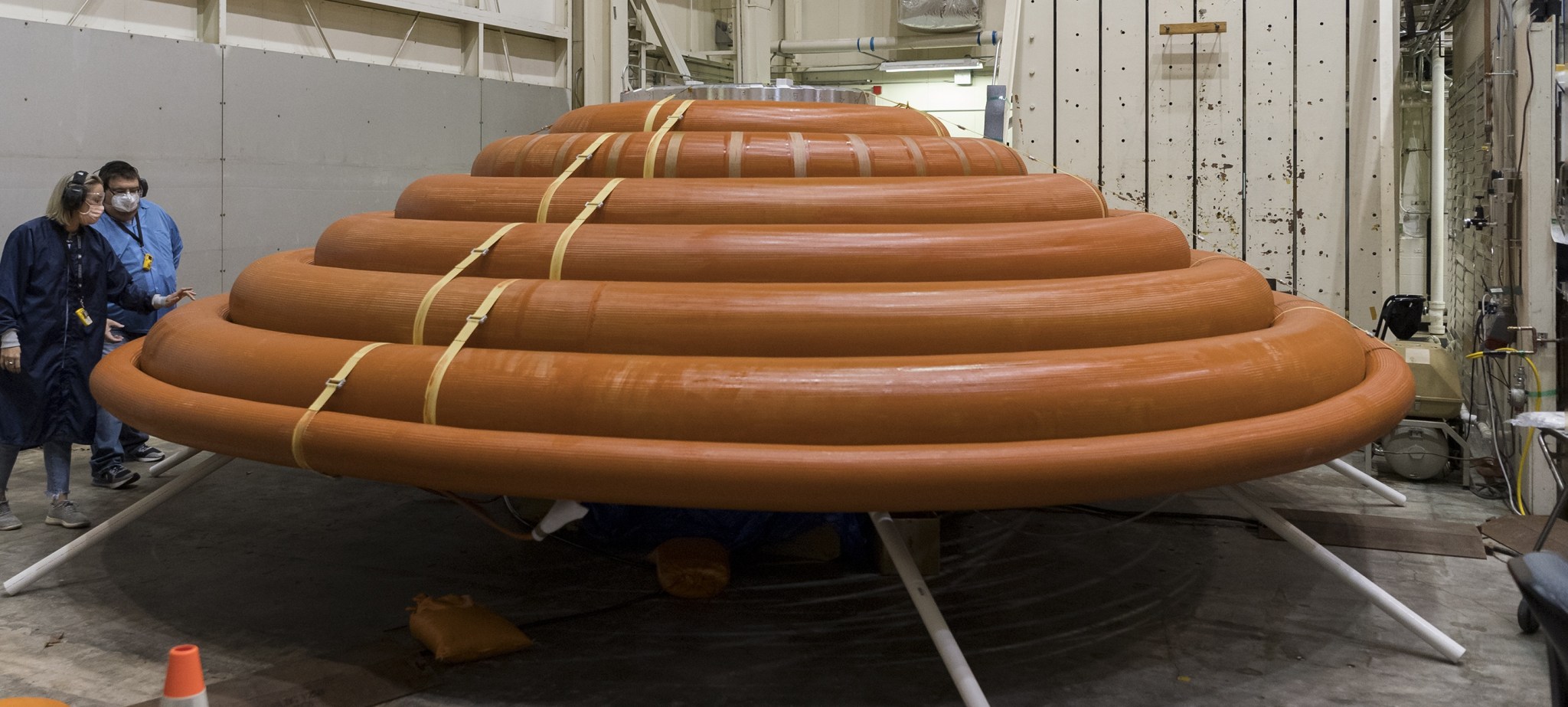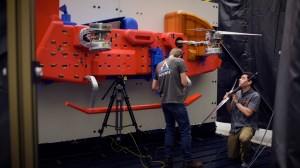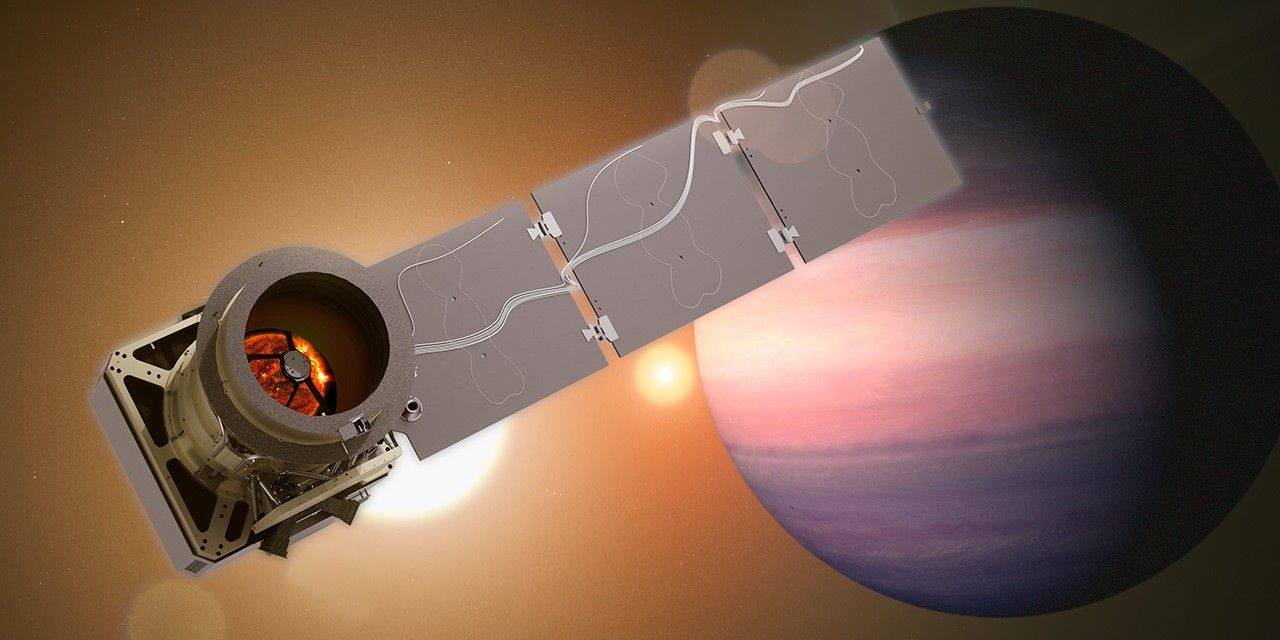How does something that looks like a stack of orange inner tubes covered in a black tarp survive temperatures reaching 3,000 degrees Fahrenheit as it plunges through the atmosphere? An upcoming technology demonstration uses advanced materials to make a heat shield that’s tougher than it looks.
Hypersonic Inflatable Aerodynamic Decelerator (HIAD) technology has been in development for more than a decade. An inflatable heat shield, unlike traditional rigid heat shields, can be packed to a very small size and then deployed to a scale much larger than a rocket’s payload fairing. A demonstration of an inflatable heat shield, or aeroshell, Low-Earth Orbit Flight Test of an Inflatable Decelerator (LOFTID), is the next step in advancing this technology that could one day help land humans on Mars.
Previous successful tests of HIAD technology, including the Inflatable Re-entry Vehicle Experiment, or IRVE, series launched on sounding rockets from NASA’s Wallops Flight Facility on Wallops Island, Virginia. LOFTID, launched on a United Launch Alliance (ULA) Atlas V rocket, will be the largest of the aeroshells tested, at 20 feet, or 6 meters, across.
LOFTID will launch as a secondary payload with the National Oceanic and Atmospheric Administration’s (NOAA) Joint Polar Satellite System-2 (JPSS-2) satellite in November 2022. After JPSS-2 separates from the rocket’s upper stage, LOFTID will inflate and re-enter the atmosphere to prove if it can successfully slow down large payloads – such as crewed spacecraft, robotic explorers, and rocket components – enabling them to survive the heat of re-entry.
“One of the biggest differences is before we were doing sub-orbital tests, coming in at roughly 5,600 miles per hour or 2.5 kilometers per second, which is already difficult,” said Steve Hughes, LOFTID aeroshell lead at NASA’s Langley Research Center in Hampton, Virginia . “But with LOFTID, we’ll be coming in at nearly 18,000 miles per hour, or 8 kilometers per second. That is about three times as fast, but that means nine times more energy.”
Surviving that incredible amount of energy is where LOFTID’s thermal protection system comes into play.
The LOFTID aeroshell is made of an inflatable structure and flexible thermal protection system, constructed from advanced materials with high temperature limits.
The thermal protection system is made of four elements. First, the outer fabric is a woven ceramic, silicon carbide, which is made into such a small diameter fiber that it can be bundled and spun into a yarn. The raw material is also black, giving the outside of the aeroshell its color.
“Then you can weave it into a manufactured cloth, using an industrial fabric weaver – the same machine used to make jeans,” Hughes said.
Under the ceramic outer layers are two types of flexible insulation that keep high temperatures on the outside from getting to the gas barrier – the fourth component of the thermal protection system – and inflatable structure.
The inflatable structure is a stacked ring assembly. The rings are woven from a synthetic polymer that is, by weight, 10 times stronger than steel – this makes the assembly pliable enough to fold for launch, but strong enough to remain rigid when inflated, maintaining the shape of the aeroshell. The inflatable rings, or tori, provide structural stability when stacked.
The inflatable structure is attached to a rigid center body, which houses LOFTID’s inflation system, much of its instrumentation, parachutes, data recorders, and more. Straps are used to fix and mount the inflatable structure to the rigid center body to distribute the load. The tori are coated in a high temperature use silicone adhesive, which gives the entire inflatable structure a reddish/orange hue.
The number of tori, straps, layers of insulation, and the overall size of the heat shield could all be scaled depending on the mission – meaning this technology could be used for a range of future missions, from landing crewed missions on Mars to returning large spaceflight components from low-Earth orbit.
LOFTID is dedicated to the memory of Bernard Kutter, manager of advanced programs at ULA, who passed away in August 2020 and was an advocate for technologies like LOFTID that can lower the cost of space access.
The LOFTID project is managed and funded through NASA’s Technology Demonstration Missions program, part of the agency’s Space Technology Mission Directorate. The project is led by NASA’s Langley Research Center in Hampton, Virginia, in partnership with United Launch Alliance and with contributions from NASA’s Ames Research Center in Silicon Valley, Marshall Space Flight Center in Huntsville, Alabama, and Armstrong Flight Research Center in Edwards, California. NASA’s Launch Services Program, based at the agency’s Kennedy Space Center in Florida, is responsible for managing the launch service.































